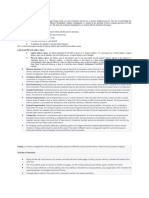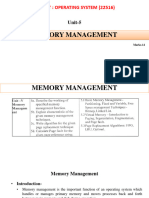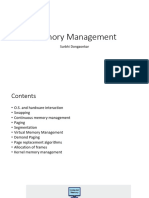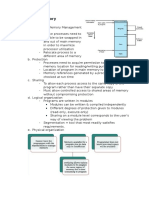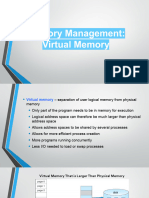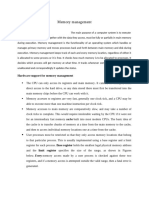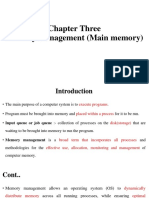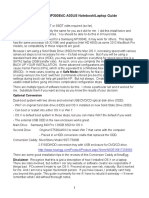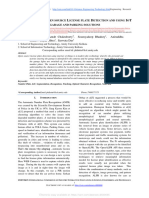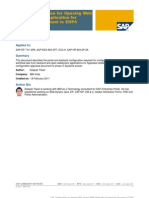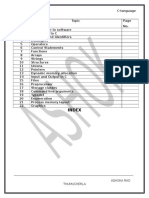0% found this document useful (0 votes)
30 views3 pagesMemory Management Concepts
The document discusses memory management techniques in computing, contrasting bare machines with resident monitors and exploring fixed and variable partitioning methods. It covers advanced concepts like paging, segmentation, and virtual memory, detailing their advantages, challenges, and performance factors. Additionally, it addresses cache memory organization, locality of reference, and protection schemes to prevent unauthorized access between processes.
Uploaded by
abhishekpal7990711Copyright
© © All Rights Reserved
We take content rights seriously. If you suspect this is your content, claim it here.
Available Formats
Download as PDF, TXT or read online on Scribd
0% found this document useful (0 votes)
30 views3 pagesMemory Management Concepts
The document discusses memory management techniques in computing, contrasting bare machines with resident monitors and exploring fixed and variable partitioning methods. It covers advanced concepts like paging, segmentation, and virtual memory, detailing their advantages, challenges, and performance factors. Additionally, it addresses cache memory organization, locality of reference, and protection schemes to prevent unauthorized access between processes.
Uploaded by
abhishekpal7990711Copyright
© © All Rights Reserved
We take content rights seriously. If you suspect this is your content, claim it here.
Available Formats
Download as PDF, TXT or read online on Scribd
/ 3







